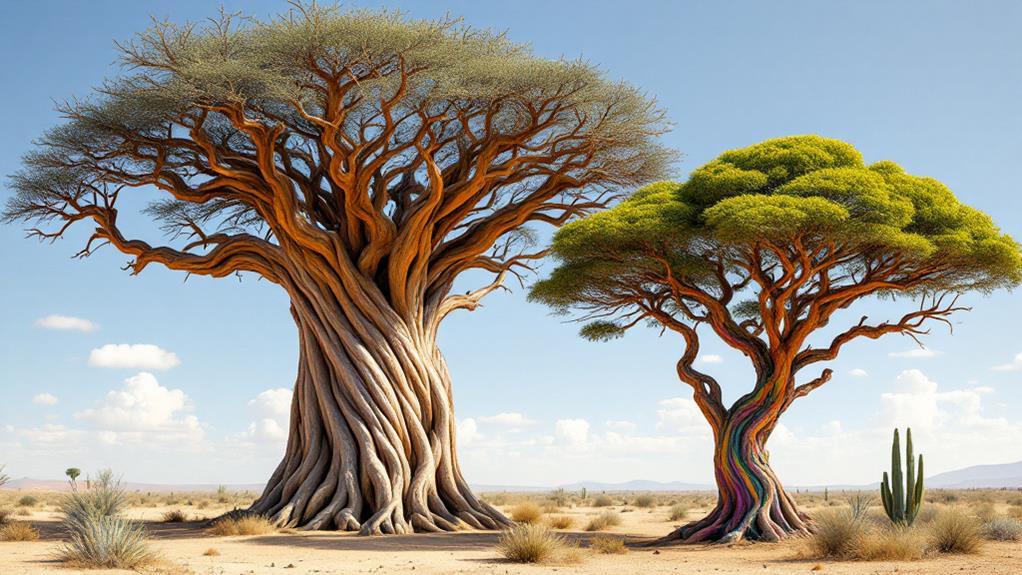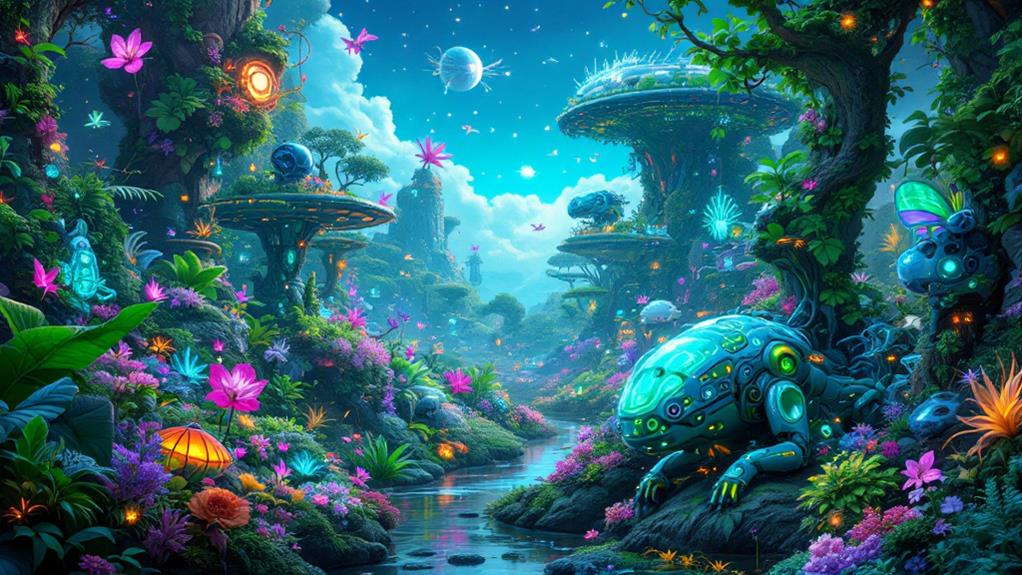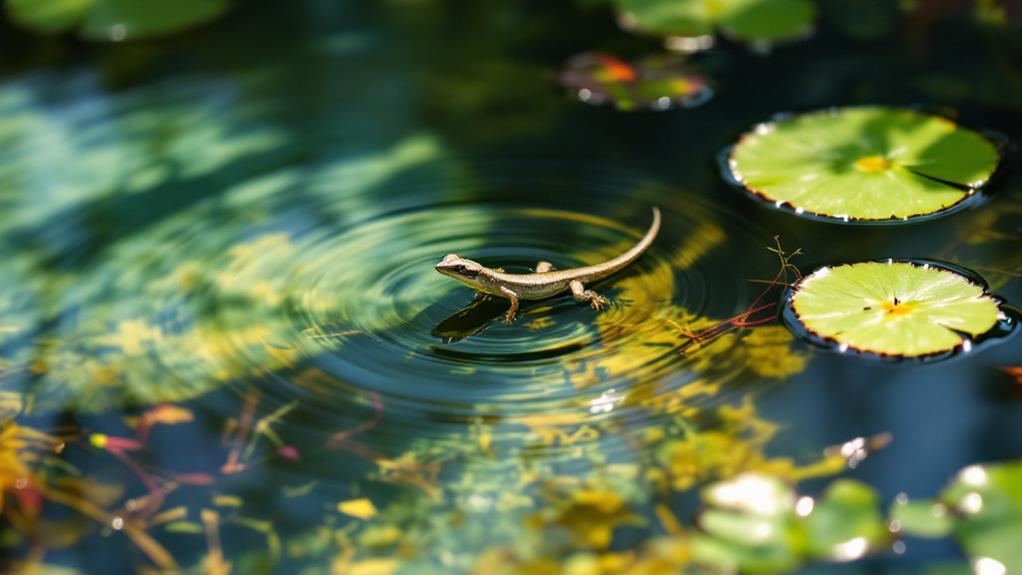A Guide to the Deadliest Animals on the Planet: Nature’s Most Dangerous Creatures
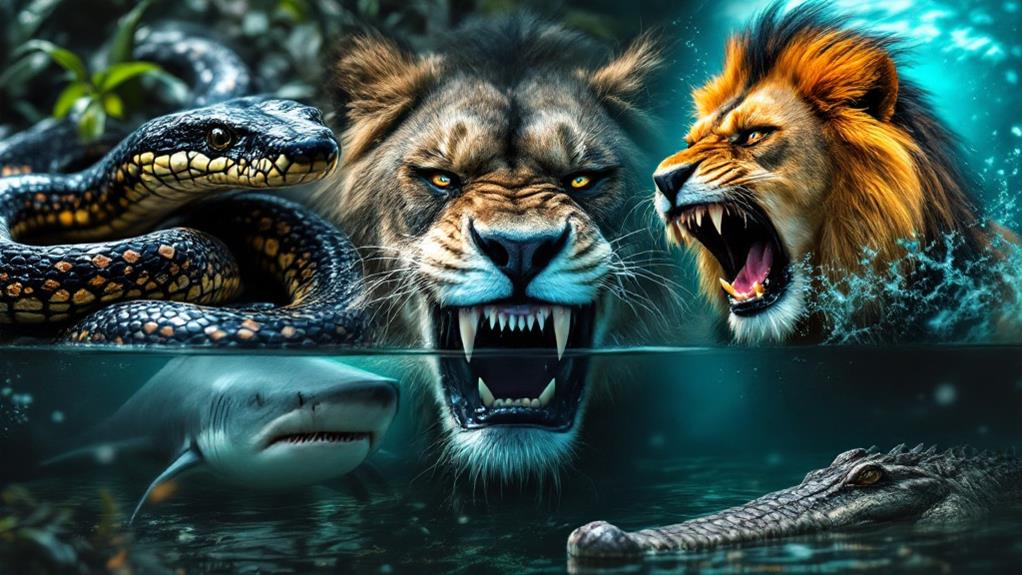
You're venturing into the domain of the deadliest creatures on our planet. The box jellyfish floats silently in warm waters, its venom causing swift devastation. The saltwater crocodile is a master of ambush with unmatched strength. Admire elephants from afar; their power is dangerous when provoked. Cape buffalo have unpredictable aggression, while the colorful poison dart frog can kill with a touch. Cone snails wield lethal toxins, and the inland taipan holds the title for the most venomous snake. Enter the Brazilian wandering spider's territory with caution, and recognize the great white shark's prowess in the ocean. Uncover more astounding facts ahead.
Box Jellyfish
Among the most dangerous marine creatures, the box jellyfish stands out due to its potent venom and near-transparent appearance. When you're swimming in their habitat, you might not even notice them until it's too late. Their venomous tentacles, which can extend up to 10 feet, are equipped with thousands of stinging cells known as nematocysts. These cells release venom that can cause heart failure, paralysis, or even death within minutes if not treated promptly.
You'd think such a lethal creature would be easy to spot, but the box jellyfish's nearly invisible body makes them stealthy aquatic predators. They inhabit warm coastal waters, mainly around northern Australia and throughout the Indo-Pacific region. Unlike other jellyfish, the box jellyfish doesn't drift aimlessly. Instead, it propels itself with a degree of control, making it a formidable hunter. Its cube-shaped bell allows it to move with purpose, hunting small fish and invertebrates.
When you encounter a box jellyfish, immediate medical attention is vital. Vinegar can neutralize their venomous tentacles temporarily, but professional help is necessary. Your awareness and cautiousness around these creatures can be lifesaving.
Saltwater Crocodile
Lurking in the murky waters of northern Australia and Southeast Asia, the saltwater crocodile is a fearsome predator you don't want to encounter. Known for its aggressive nature and sheer power, it's the largest living reptile on Earth. Its crocodile habitat includes estuaries, rivers, and coastal areas, where it thrives in both saltwater and freshwater environments. This adaptability allows it to dominate diverse ecosystems, making it a top predator.
When it comes to hunting techniques, the saltwater crocodile is cunning and patient. You'll find it silently stalking its prey, often lurking just beneath the water's surface. With remarkable stealth, it can approach unsuspecting animals that come to drink or cross the water. Once within striking distance, it launches a ferocious attack, using its powerful jaws to secure its catch. The crocodile's infamous "death roll" follows, a maneuver designed to disorient and drown its prey.
You should be aware that these apex predators don't discriminate between animal or human prey. So, if you're exploring their territory, exercise extreme caution and respect for their habitat. Remember, in the world of saltwater crocodiles, you're in their domain.
African Elephant
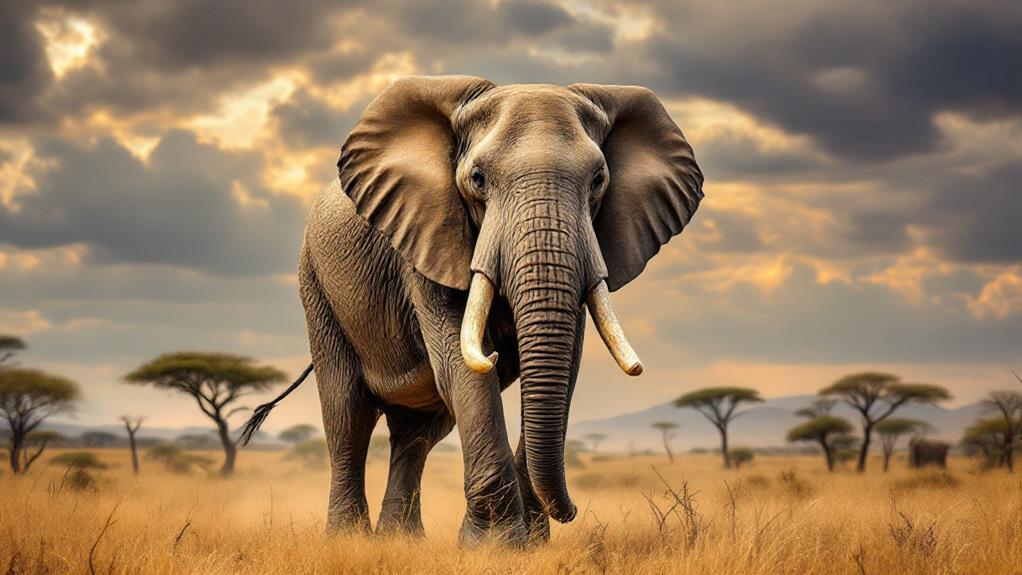
With their towering presence and majestic tusks, African elephants are a remarkable sight in the vast savannas and forests they call home. However, don't let their grandeur fool you. These gentle giants can become incredibly dangerous if threatened. Understanding African elephant behavior is essential for your safety and theirs. They are highly intelligent, social creatures living in matriarchal herds. When protecting their young or territory, they can charge with surprising speed and force, which makes encounters potentially deadly.
African elephant conservation is critical, not only for preserving biodiversity but also for ensuring human safety. As human populations expand, elephants often come into conflict with communities, leading to tragic outcomes for both. Conservation efforts focus on creating corridors that allow elephants to roam freely while minimizing human interaction. By supporting these initiatives, you contribute to reducing the chances of dangerous encounters.
Cape Buffalo
Though often overshadowed by the more famous members of Africa's Big Five, the Cape buffalo is not to be underestimated. You might think it's just a large, grazing animal, but its reputation for being unpredictable and aggressive is well-earned. When you encounter a Cape buffalo, you should be aware of its complex behavior and the environment it thrives in.
Cape buffalo behavior is both captivating and intimidating. They might look calm, but they can charge without warning, especially if they feel threatened. These creatures are known to band together in herds, offering protection against predators. Curiously, they have a keen memory and can hold a grudge against those who harm them.
The cape buffalo habitat spans across diverse African landscapes. You'll find them in savannas, grasslands, and even dense forests. Their ability to adapt to different environments is remarkable.
Consider these fascinating facts about Cape buffalo:
- They weigh between 1,100 and 2,200 pounds.
- Despite their size, they can run up to 35 miles per hour.
- They have poor eyesight but a strong sense of smell.
- They're responsible for more hunter fatalities than any other African animal.
- A cape buffalo's horns are fused at the base, forming a protective shield.
Poison Dart Frog
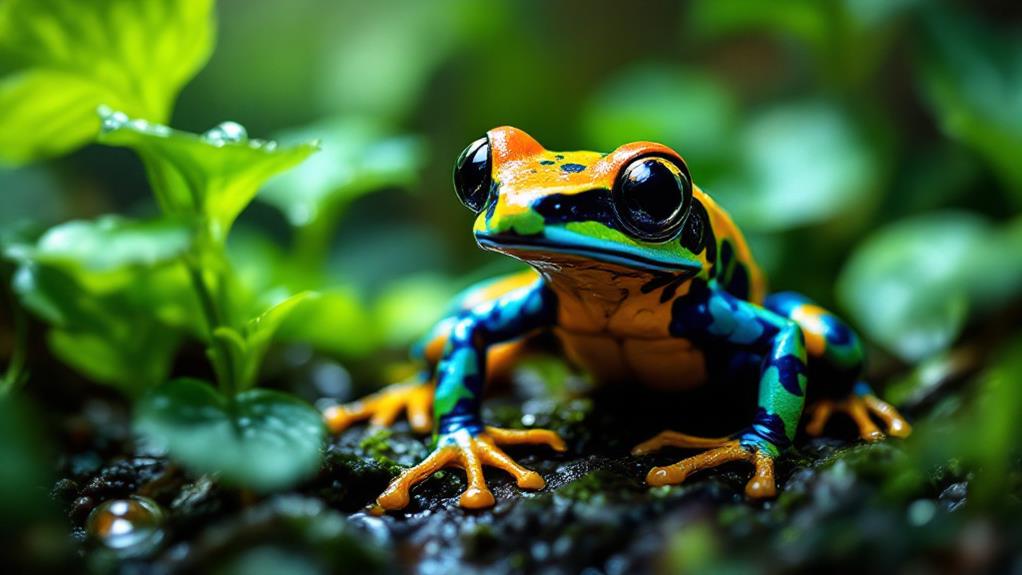
While the Cape buffalo relies on brute strength in its arsenal, the poison dart frog employs a much more subtle yet equally effective method of defense. With its lively colors, this tiny amphibian sends a clear warning: stay away. Found primarily in Central and South American rainforests, these frogs possess venomous adaptations that make them one of nature's most dangerous creatures. Their skin secretes a potent toxin, capable of paralyzing or even killing predators that dare to touch or consume them.
You might wonder how such a small creature evolved to become so deadly. The secret lies in their diet, which includes ants, termites, and other small insects. These critters consume plant toxins that the frogs then sequester and concentrate in their own bodies, creating a powerful defense mechanism. It's a fascinating example of nature's ingenuity.
Habitat preservation is vital for these frogs. As rainforests face deforestation and climate change, their survival is under threat. By protecting their natural environments, you help guarantee these unique creatures continue to thrive. Remember, the survival of the poison dart frog is intricately linked to the health of their habitat, highlighting the importance of conservation efforts.
Cone Snail
You might be surprised to learn that the cone snail, a seemingly harmless marine mollusk, is one of the ocean's most lethal predators. Despite its attractive appearance, this snail is anything but friendly. Found in tropical and subtropical regions, cone snail habitats include coral reefs, mangroves, and sandy ocean floors. It's essential to exercise caution if you encounter one, as its venom can be deadly.
The cone snail uses a specialized harpoon-like tooth to deliver a potent cocktail of toxins. Cone snail venom is designed to swiftly paralyze its prey, making escape impossible. This venom is so powerful that it can cause severe pain, paralysis, or even death in humans. Here's why you should be cautious:
- Deceptive beauty: Their colorful shells can be misleading.
- Rapid strike: They can strike in less than a second.
- Diverse species: Over 500 species, each with unique venom.
- No known antidote: Immediate medical attention is vital.
- Silent hunters: Often buried in sand, they're hard to spot.
Inland Taipan
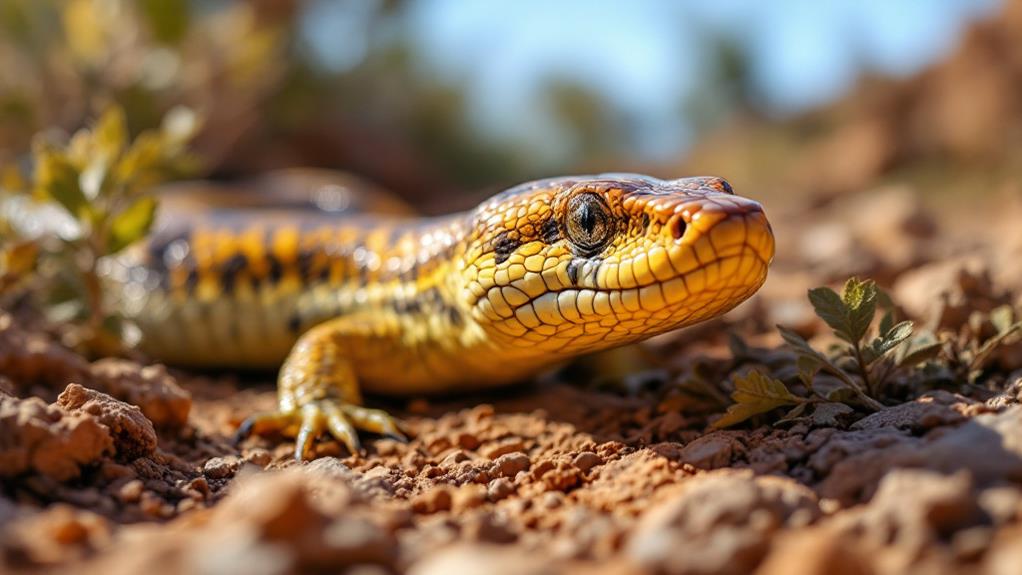
Just as the ocean conceals the danger of the cone snail, the land harbors its own hidden peril: the Inland Taipan. Known as the world's most venomous snake, this creature is a master of stealth. You might not even spot it as it blends seamlessly into its remote habitat range, which spans the arid landscapes of central Australia. This isolation is a blessing, as it rarely crosses paths with humans.
When it comes to venom potency, the Inland Taipan is unmatched. A single bite contains enough venom to kill over 100 humans or 250,000 mice. Its venom acts swiftly, attacking the nervous system and blood, causing paralysis and hemorrhaging. Thankfully, the Inland Taipan is reclusive and prefers to avoid confrontation. It typically strikes only when threatened or provoked.
Understanding the Inland Taipan's behavior is essential if you ever find yourself in its territory. Stay vigilant and maintain a respectful distance. Remember, it's not aggressive by nature, but it's always ready to defend itself with unparalleled precision. By appreciating its role in nature and respecting its space, you can safely admire this fascinating yet formidable creature from afar.
Brazilian Wandering Spider
Lurking in the shadows of the Brazilian rainforest, the Brazilian Wandering Spider commands attention with its imposing presence. Known for its potent venomous bite, this arachnid can send chills down anyone's spine. Unlike most spiders, it doesn't spin webs to catch prey. Instead, it roams the forest floor, making it more likely to cross paths with unsuspecting humans. Its habitat preferences include not only the dense rainforest but also urban areas, where it hides in shoes, clothes, and other dark places.
When you consider this spider, it's essential to be aware of its:
- Highly toxic venom: Capable of causing intense pain and other severe symptoms.
- Aggressive behavior: Known to stand its ground rather than flee.
- Nocturnal nature: Most active at night, increasing chances of surprise encounters.
- Varied diet: Consumes insects, amphibians, and even small mammals.
- Camouflage skills: Blends well with its surroundings, making it hard to spot.
Encountering a Brazilian Wandering Spider is not something anyone desires. Its ability to adapt to different environments guarantees it remains a formidable presence, both in the wild and in human-populated areas. Stay vigilant and informed to avoid unwanted surprises.
Great White Shark
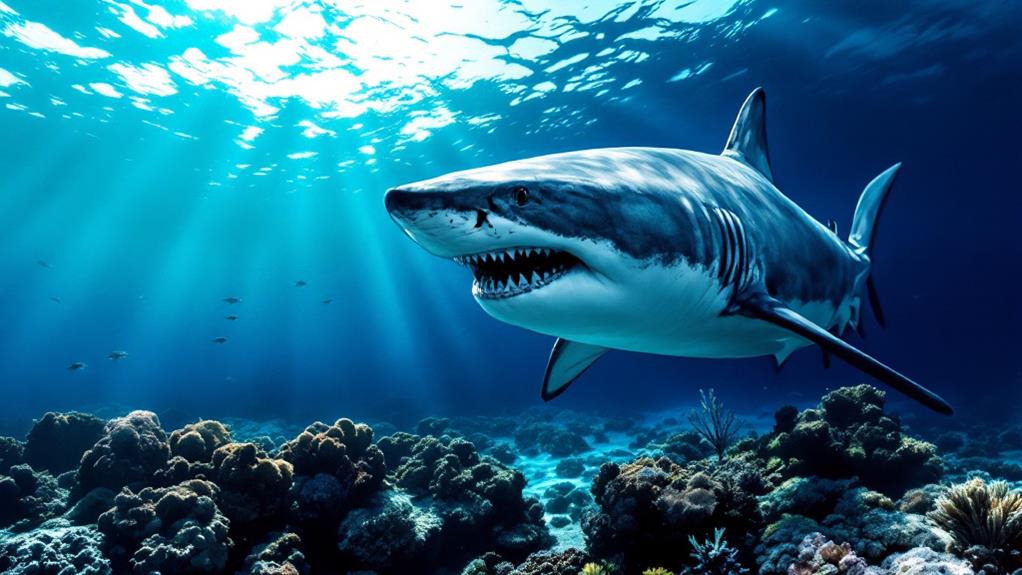
While the Brazilian Wandering Spider prowls the forest floors, the Great White Shark dominates the ocean's depths with its powerful presence. You can't mistake its iconic dorsal fin slicing through the water. These apex predators are found in great white habitats ranging from the chilly waters off the coasts of South Africa and Australia to the warmer shores of California. They're not only feared but also fascinating creatures.
When observing great white behavior, you'll notice their strategic hunting skills. They rely on stealth and surprise, often ambushing seals and sea lions with incredible speed and precision. Despite their terrifying reputation, great whites rarely target humans. Most attacks are cases of mistaken identity, as they often mistake surfers or swimmers for their favorite prey.
Understanding great white behavior is essential for keeping these encounters rare. Their migratory patterns show a preference for waters rich in prey, which is why you'll often find them near seal colonies. Conservation efforts aim to protect these powerful predators since they play a significant role in maintaining the balance of marine ecosystems. Next time you're near the ocean, remember you share the waters with nature's most formidable swimmer.
